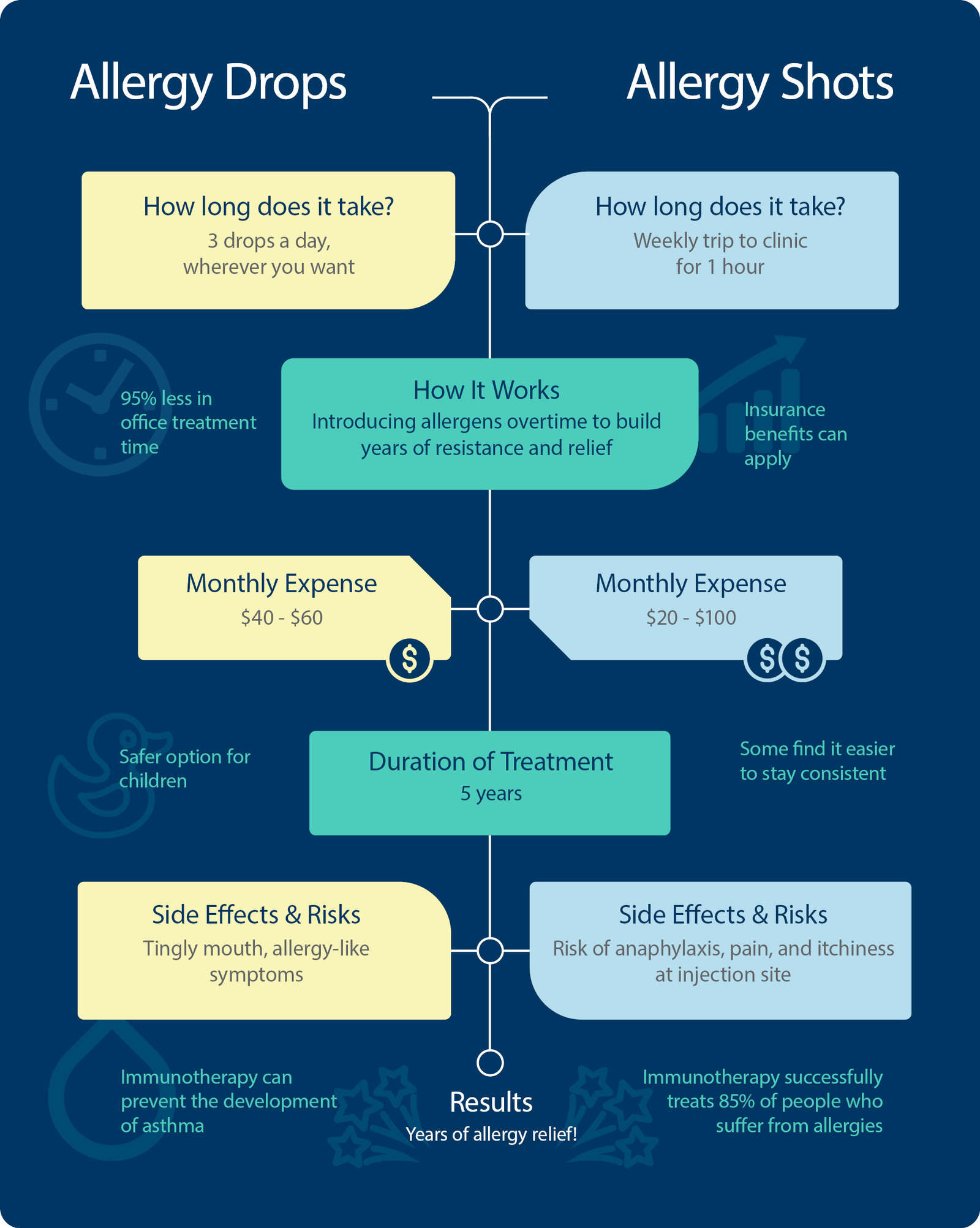
Allergies present a formidable challenge for millions worldwide, leading to discomfort and a diminished quality of life. As modern medicine progresses, the array of allergy treatments has burgeoned, with a particular focus on allergy drops, otherwise known as sublingual immunotherapy (SLIT). These treatments offer an innovative approach to mitigating allergic responses. In exploring which allergy drops exhibit the highest success rates, one must investigate multiple facets of these therapies, including the types, mechanisms, and clinical evidence supporting their efficacy.
Firstly, it is essential to delineate the types of allergy drops available on the market. Allergy drops can be broadly categorized into two main types: environmental allergy drops and food allergy drops. Environmental allergy drops primarily target common allergens such as pollen, dust mites, mold, and pet dander. These drops aim to desensitize the immune system to specific allergens, thereby reducing symptoms over time. Food allergy drops, although still under extensive investigation, represent an emerging frontier in immunotherapy, offering the potential to desensitize patients to particular food allergens.
Environmental allergy drops, particularly those focused on inhalant allergens, have garnered significant attention due to their considerable success rates. Research indicates that patients receiving SLIT for pollen allergies, for instance, can experience a reduction in symptoms of up to 70% after a full course of treatment. Moreover, a systematic review of multiple studies revealed that the consistent use of environmental allergy drops captures an impressive and well-documented improvement in symptoms for individuals afflicted by hay fever and related conditions.
Delving deeper into mechanisms, it is crucial to understand why these drops are effective. Sublingual immunotherapy hinges on the principle of gradual allergen exposure, allowing the immune system to recalibrate its response. When administered under the tongue, allergens are absorbed into the bloodstream, where they stimulate a gradual but significant change in immune signaling pathways. This process ultimately results in a shift from a Th2-dominant response—which is characteristic of allergic reactions—toward a more balanced Th1 response. This immunological transition underlies the therapeutic benefits observed in many patients.
Next, considering the consideration of success rates, it is imperative to evaluate the robustness of clinical evidence. Various clinical trials have validated the use of environmentally oriented allergy drops; for example, one significant study involving a substantial cohort demonstrated that participants who followed a prescribed regimen exhibited marked improvement in allergy severity, culminating in a reduction of medication requirements by more than 50%. This enhancement in both quality of life and a decrease in symptomatic severity underscores the promise that these drops hold for individuals with persistent allergic conditions.
Conversely, one must approach food allergy drops with a degree of caution. Though preliminary studies are promising, the field is still evolving. Current research explores desensitization protocols for allergies such as peanuts and tree nuts, employing carefully monitored administration techniques. Early findings suggest that patients undergoing SLIT for food allergies have shown rates of tolerability improvements, albeit with varying degrees of success among different allergy types. More extensive long-term studies will be critical in establishing consistent efficacy and safety parameters.
When discussing the application of these drops, it is equally significant to recognize the patient experience. Compliance with treatment regimens is paramount for achieving desired outcomes. Allergy drops typically require daily administration and can initially provoke mild localized reactions. Educating patients about the anticipated adjustments can foster adherence throughout the course of therapy. Moreover, accessibility remains a pivotal issue, as not all individuals have readily available access to allergists or specialized practitioners knowledgeable about sublingual therapies.
Beyond adherence to treatment, individual patient factors play a vital role in the overall success of allergy drops. Genetic predispositions, the severity of allergies, and the duration of affliction can all influence treatment outcomes. For instance, patients seeking treatment earlier in their allergy progression may experience more pronounced benefits compared to those with prolonged exposure to allergens. This variability underscores the necessity for personalized treatment plans, assisting healthcare providers in tailoring approaches to meet each patient’s unique needs.
In conclusion, when it comes to answering the question of which allergy drops offer the highest success rates, it emerges that environmental allergy drops are currently at the forefront of clinical success, significantly altering the trajectory of allergic disease management. With reported effectiveness rates of up to 70% in specific populations, these drops demonstrate a commendable capacity to offer relief. Food allergy drops remain a promising yet developing area of research that necessitates further exploration to confirm success rates and safety profiles. As medical science continues to advance, ongoing research is crucial, equipping clinicians with nuanced insights to enhance patient care and response to treatment.
With the successful integration of allergy drops into the broader framework of allergy management, patients may find themselves empowered in their battle against allergies, with modern therapies allowing for significantly enhanced quality of life free from the constraints of debilitating allergic symptoms.
